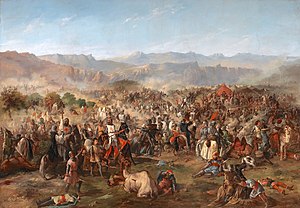

Francisco de Paula Van Halen y Gil (3 March 1814, [1] Vic - 11 February 1887, Madrid) was a Spanish painter, known primarily for battle scenes and other historical works.


Francisco de Paula Van Halen y Gil (3 March 1814, [1] Vic - 11 February 1887, Madrid) was a Spanish painter, known primarily for battle scenes and other historical works.
Long thought to be a nephew of the General and military adventurer, Juan Van Halen, recent research by Juan Van Halen Acedo indicates that he was probably the General's son. [1]
He began his career in Barcelona, then moved to Madrid, where he enrolled at the Real Academia de Bellas Artes de San Fernando and studied with José Aparicio. [2] In 1838, he made his public début at the age of twenty-four with his rendering of the death of Don Álvaro de Luna; displayed at an exposition of the "Liceo Artistico y Literario".
After that, he found work as an illustrator and engraver for some of Madrid's major magazines. He also edited several collections of lithographs, including La España Pintoresca y Artística, El Museo Histórico Español and Museo Militar. One of his most popular collections, which was reissued in the 1950s, was Función de Toros. [2]
In 1851, he was named a court painter for Queen Isabel II and was elected a member of the San Fernando Academy. [2] His work for the Queen included the creation of scientific drawings for the Museo Nacional de Ciencias Naturales and one of his two best-known battle paintings, the "Batalla de los Siete Condes" was commissioned by her. The other one, the "Battle of Las Navas de Tolosa" is on display in the Senate Palace . [2] Many of his other paintings are on display in the Royal Palace. From 1860, he was a frequent participant in the National Exhibition of Fine Arts.
His wife, Margarita, was the sister of poet and progressive politician, Fernando Corradi . He was a Commander in the Order of Isabella the Catholic. [2] A street in Vic is named after him.

The Museo del Prado, officially known as Museo Nacional del Prado, is the main Spanish national art museum, located in central Madrid. It houses collections of European art, dating from the 12th century to the early 20th century, based on the former Spanish royal collection, and the single best collection of Spanish art. Founded as a museum of paintings and sculpture in 1819, it also contains important collections of other types of works. The numerous works by Francisco Goya, the single most extensively represented artist, as well as by Hieronymus Bosch, El Greco, Peter Paul Rubens, Titian, and Diego Velázquez, are some of the highlights of the collection. Velázquez and his keen eye and sensibility were also responsible for bringing much of the museum's fine collection of Italian masters to Spain, now one of the largest outside of Italy.

Juan de Pareja was a Spanish painter of multiracial descent. Born in Antequera, he is best known as a member of the household and workshop of painter Diego Velázquez, who enslaved Pareja until 1654. Pareja's 1661 painting The Calling of Saint Matthew is currently on display at the Museo del Prado in Madrid.
Rafael Ximeno y Planes was a Spanish painter and draughtsman born in Valencia and deceased in Mexico.
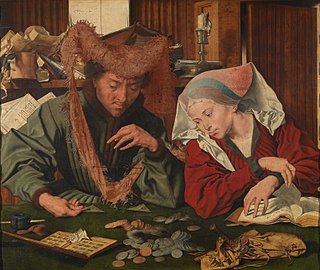
Marinus van Reymerswaele or Marinus van Reymerswale was a Dutch Renaissance painter mainly known for his genre scenes and religious compositions. After studying in Leuven and training and working as an artist in Antwerp, he returned later to work in his native Northern Netherlands. He operated a large workshop which produced many versions of mainly four themes: the tax collectors, the money changer and his wife, the calling of Saint Matthew and St. Jerome in his study.

Juan de Arellano was a Spanish painter of the Baroque era who specialized in floral still life paintings.

.
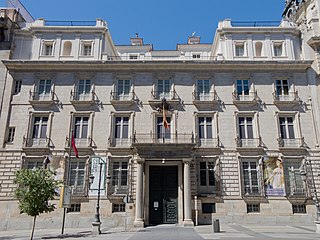
The Real Academia de Bellas Artes de San Fernando, located on the Calle de Alcalá in the centre of Madrid, currently functions as a museum and gallery. A public law corporation, it is integrated together with other Spanish royal academies in the Instituto de España.

Juan van der Hamen y (Gómez de) León was a Spanish painter, a master of still life paintings, also called bodegones. Prolific and versatile, he painted allegories, landscapes, and large-scale works for churches and convents. Today he is remembered mostly for his still lifes, a genre he popularized in 1620s Madrid.

Eugenio Caxés was a Spanish painter of the Baroque period.

The Colossus, is known in Spanish as El Coloso and also El Gigante, El Pánico and La Tormenta. It is a painting traditionally attributed to Francisco de Goya that shows a giant in the centre of the canvas walking towards the left hand side of the picture. Mountains obscure his legs up to his thighs and clouds surround his body; the giant appears to be adopting an aggressive posture as he is holding one of his fists up at shoulder height. A dark valley containing a crowd of people and herds of cattle fleeing in all directions occupies the lower third of the painting.

Carlos Luis de Ribera y Fieve was a Spanish painter, son of Juan Antonio Ribera.

Fernando Brambila, or Ferdinando Brambilla, was an Italian painter and engraver who spent most of his life in Spain, where he worked for the Royal Court. He is best known for his participation in the Malaspina Expedition.

Valentín Carderera y Solano was a Spanish painter, erudite scholar and collector. He was named honorary court painter during the reign of Isabel II.

Andrés Amaya was a Spanish Baroque painter in oils of religious subjects. He was active in the region of Castile and León, primarily in the city of Valladolid.
Andres Rossi was a Spanish artist. He worked as a painter, draughtsman, print maker, sculptor and writer in Madrid and Seville.
María del Carmen Laffón de la Escosura was a Spanish figurative painter and sculptor. She was a member of the Real Academia de Bellas Artes de San Fernando from 1998 until her death, and received numerous awards and honours, such as the Grand Cross of the Civil Order of Alfonso X, the Wise in 2017.
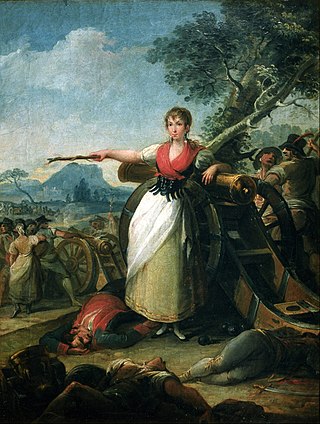
Juan Gálvez was a Spanish artist who served as court painter for King Ferdinand VII and Director of the Real Academia de Bellas Artes de San Fernando.

Sebastián Muñoz was a Spanish Baroque painter.

The Spanish royal collection of art was almost entirely built up by the monarchs of the Habsburg family who ruled Spain from 1516 to 1700, and then the Bourbons. They included a number of kings with a serious interest in the arts, who were patrons of a series of major artists: Charles V and Philip II were patrons of Titian, Philip IV appointed Velázquez as court painter, and Goya had a similar role at the court of Charles IV.
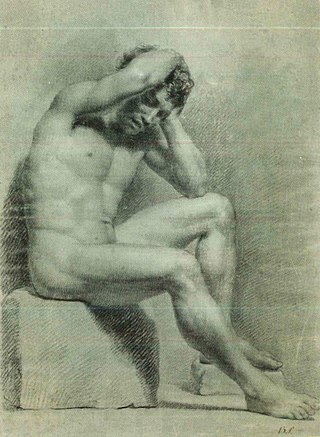
Buenaventura Salesa was a Spanish graphic artist and painter in the Neo-Classical style.